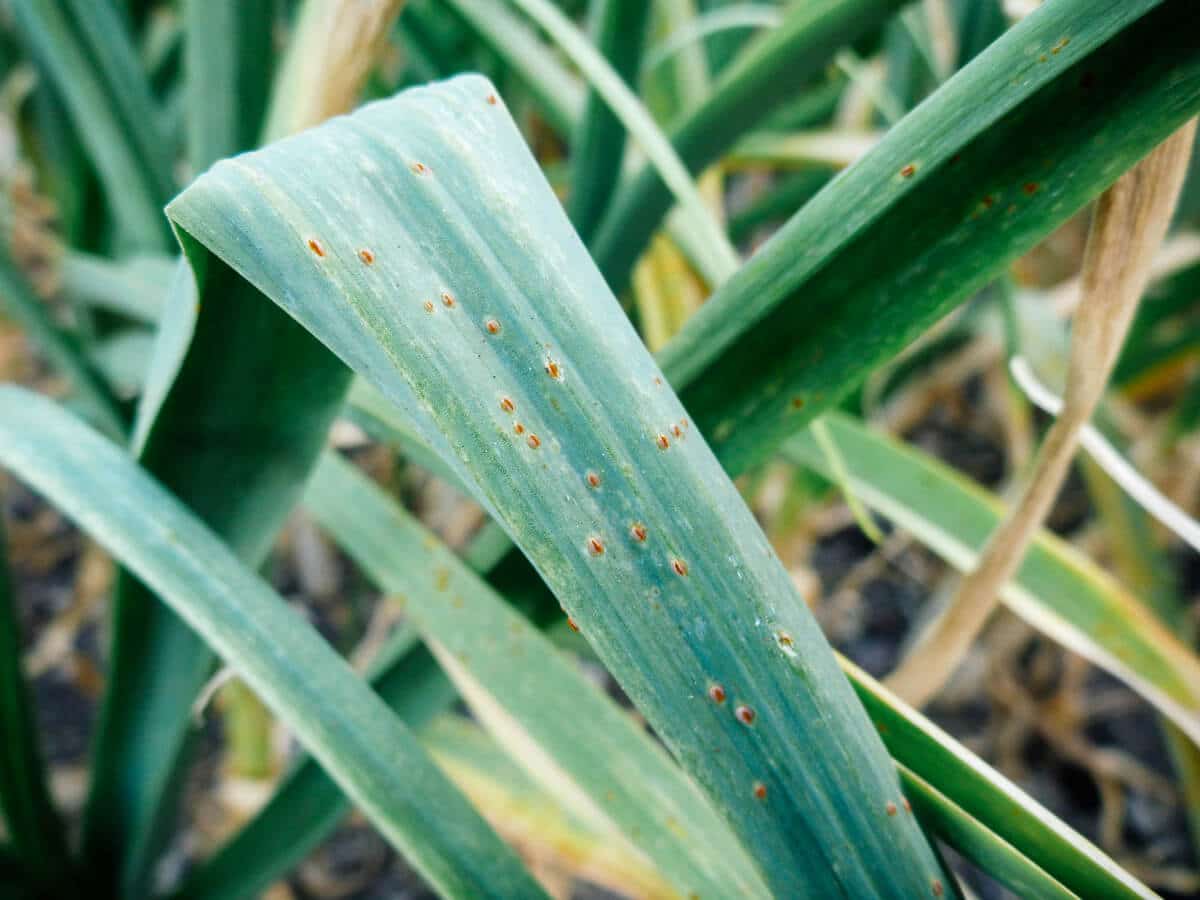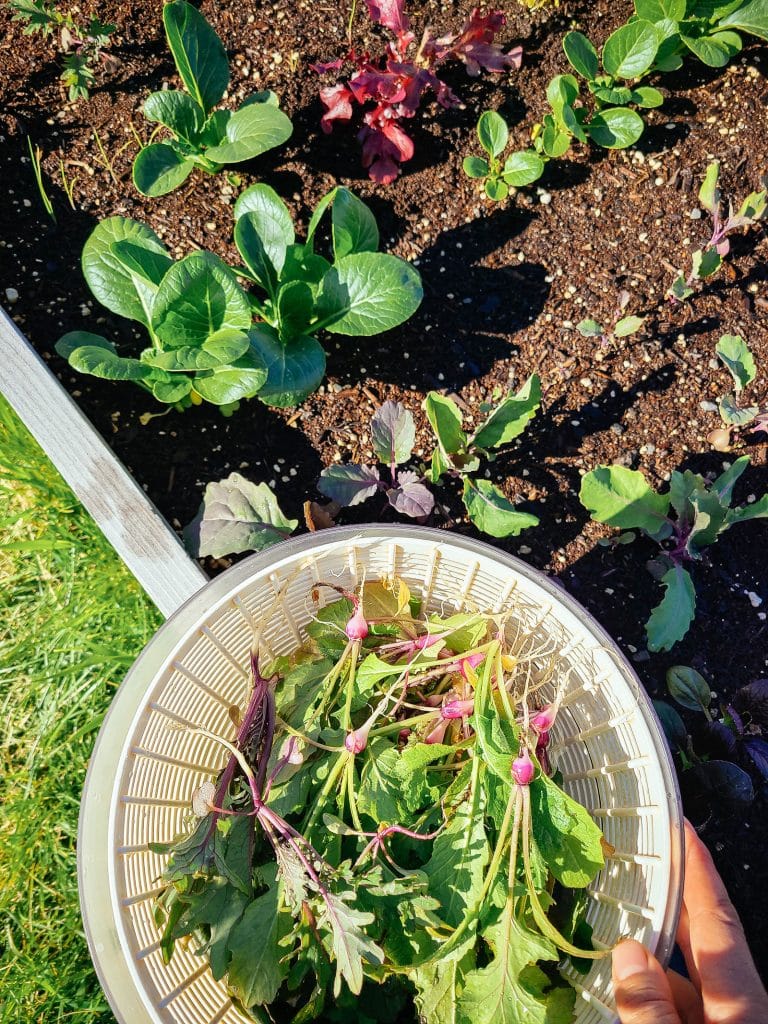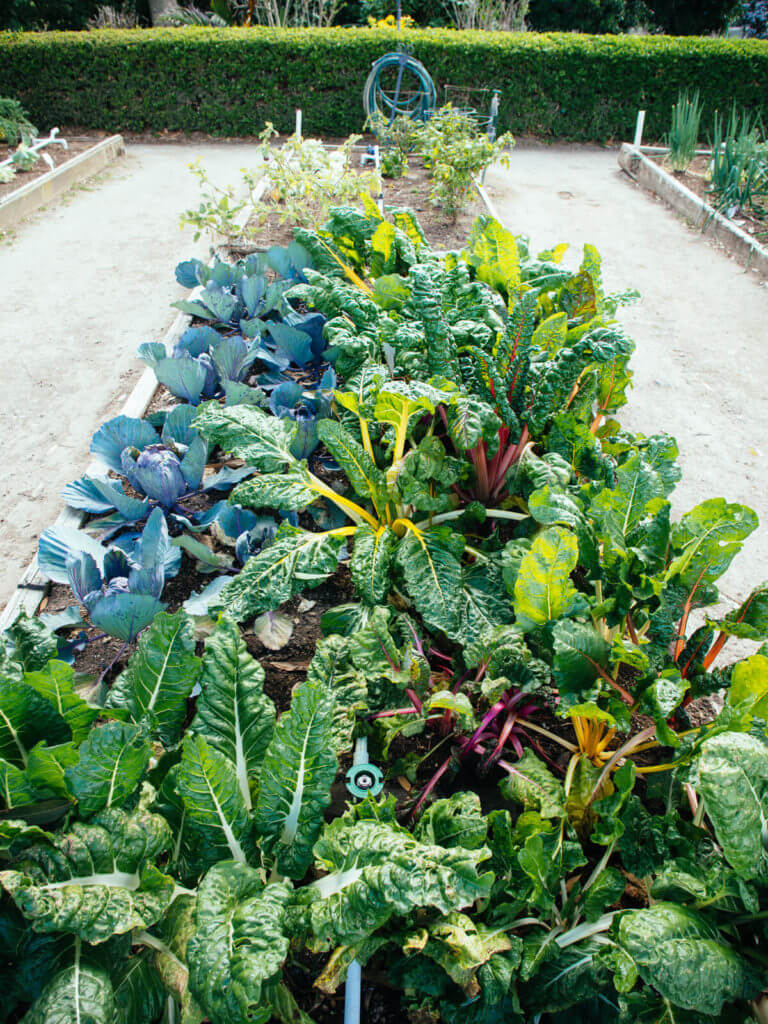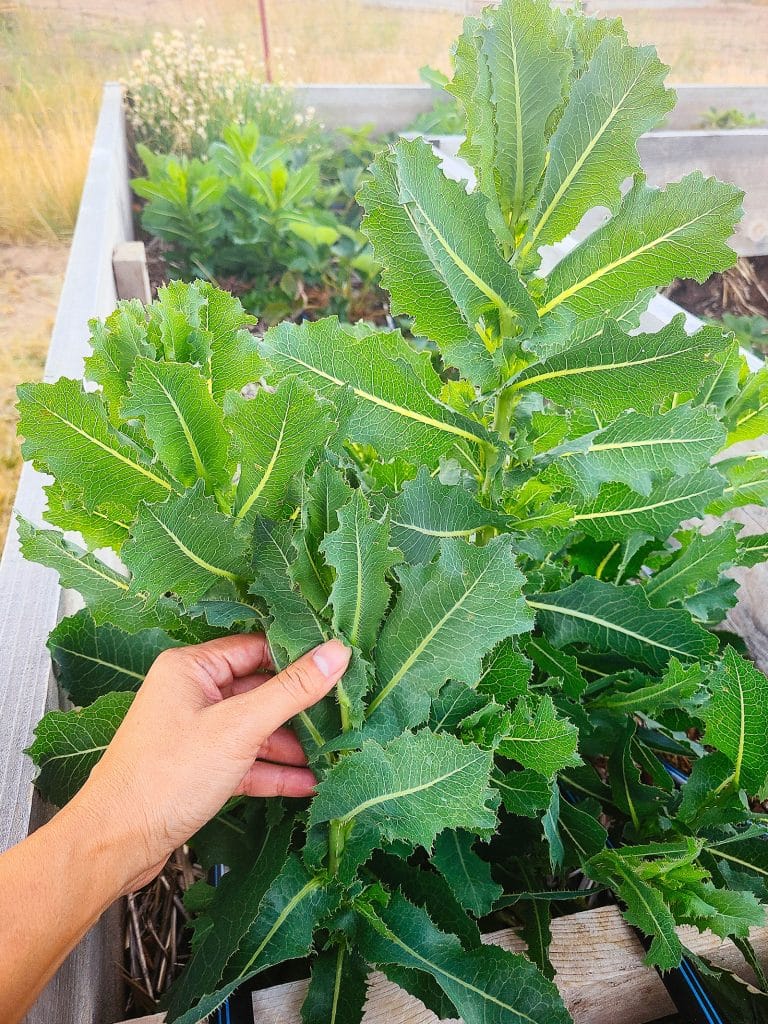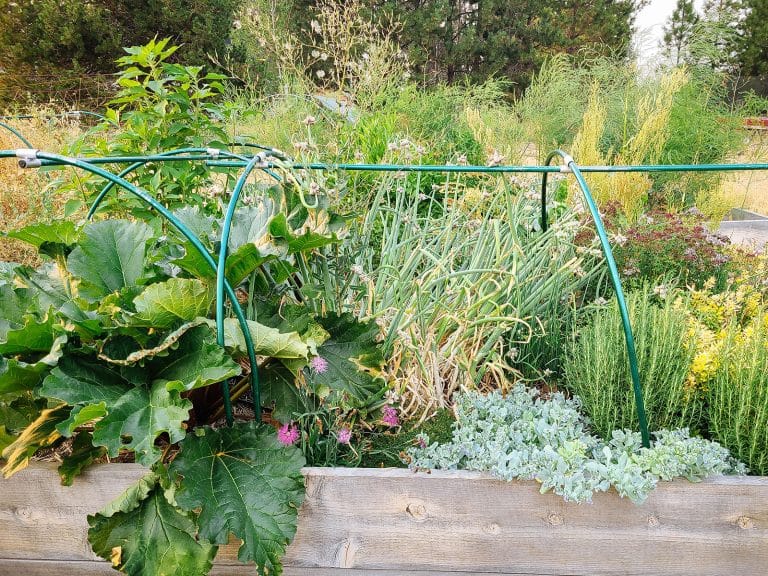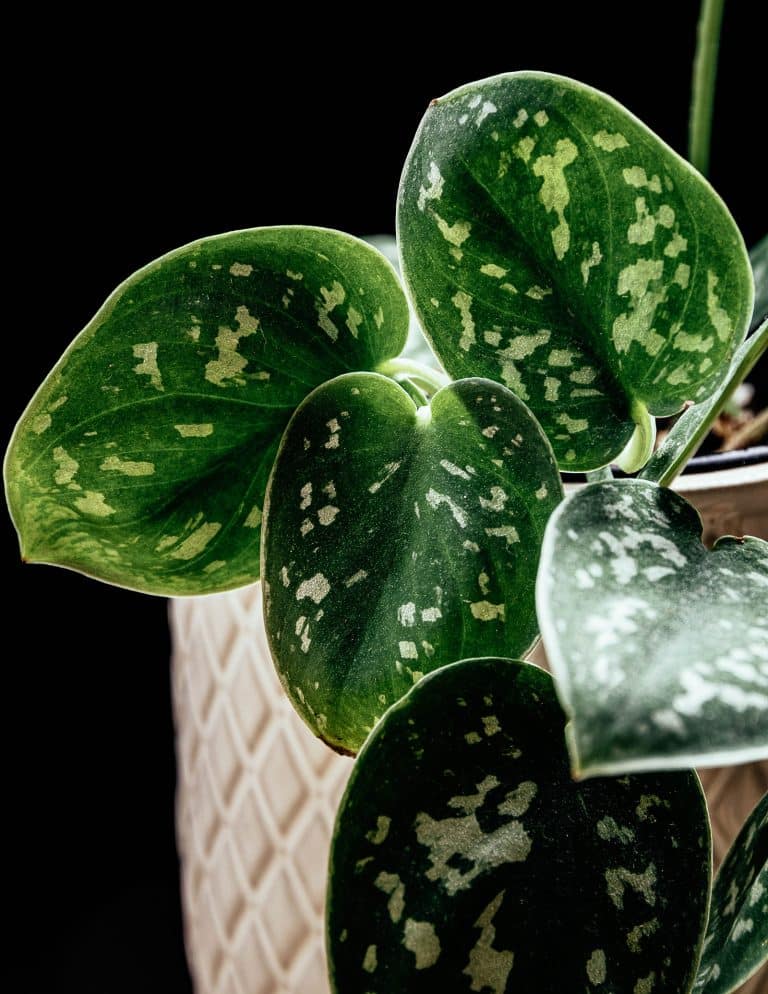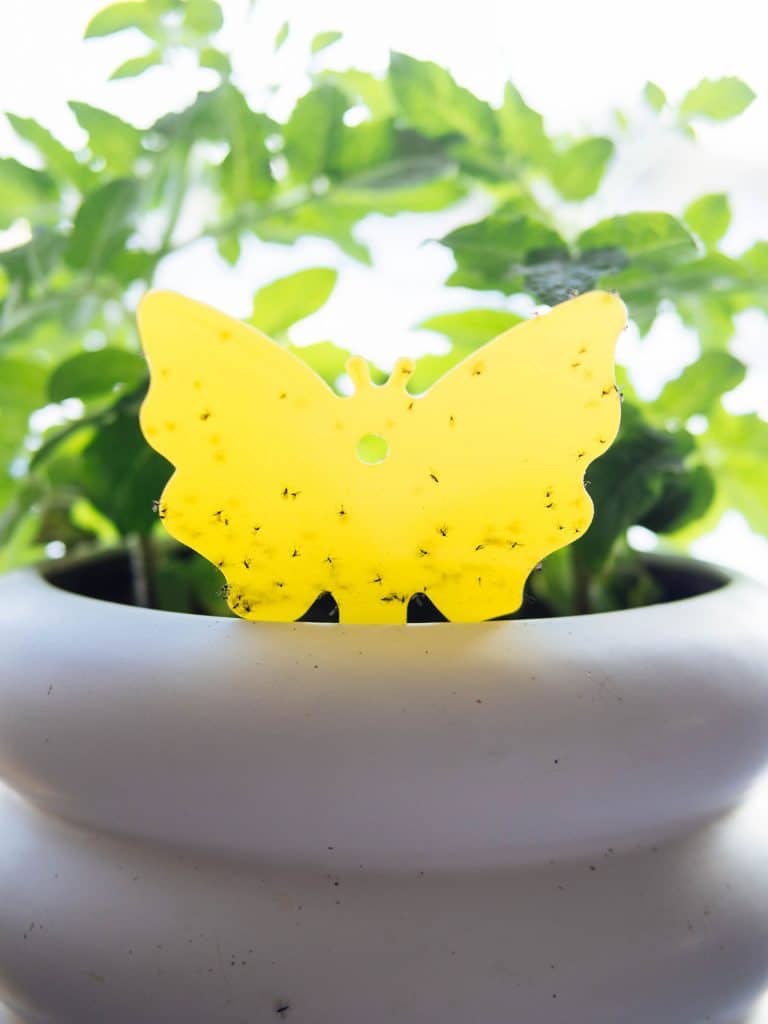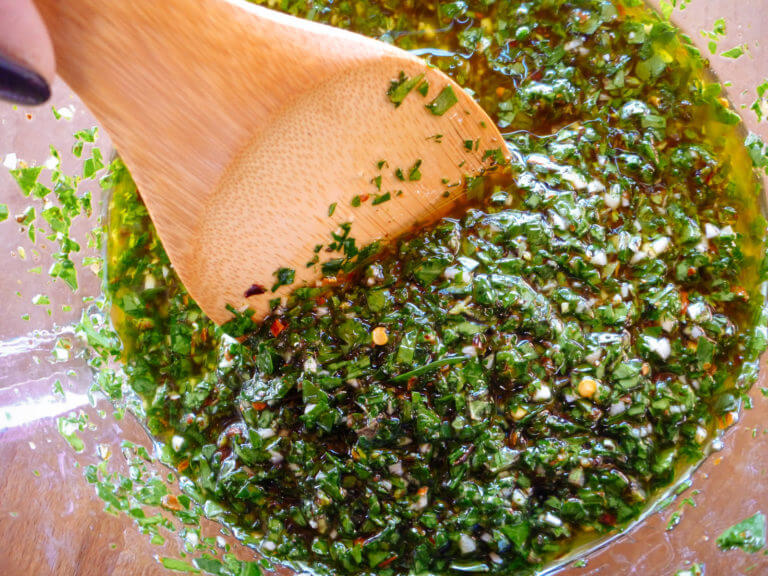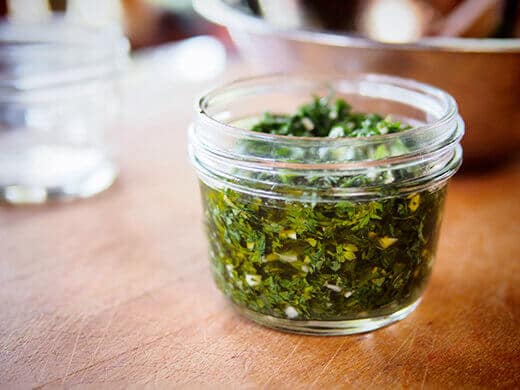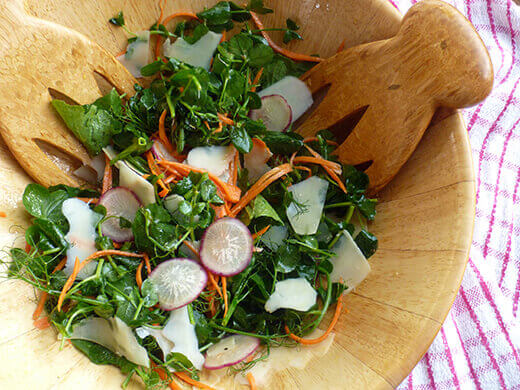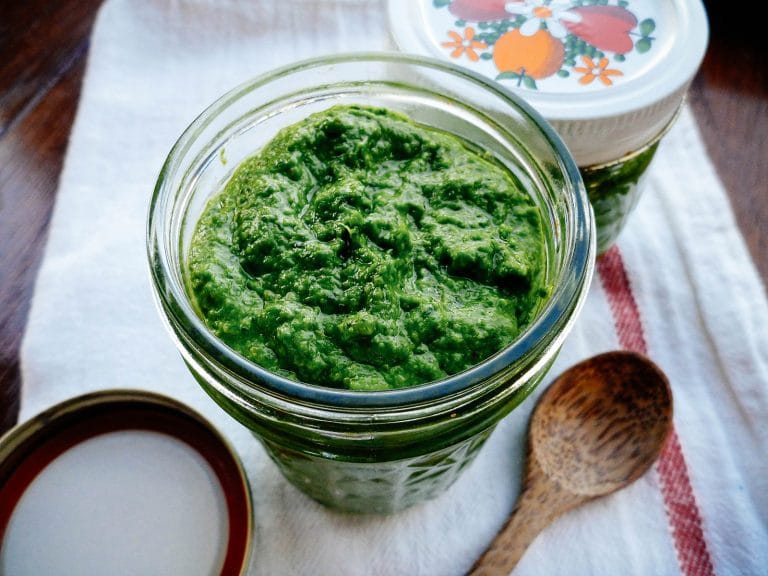After a particularly rainy and dismal spring, followed by May Gray (the predecessor of June Gloom on the west coast), a small patch of my garlic plants started developing white and yellowish-orange flecks on their leaves.
The flecks intensified, spread to neighboring garlic plants, and soon were infecting entire leaves, causing some to wilt and die off early. I even had the disease consume an entire plant, but luckily, it was close to harvest time and the garlic bulb survived.
You may have seen this on other plants too: onions, leeks, shallots, chives and even corn, wheat, sugarcane, and lemongrass are all susceptible to this disease.
But in this post, we’ll be focusing on a type of rust that’s most commonly found in a home vegetable garden: garlic rust.
What is garlic rust?
Rust is a fungal disease that affects garlic, but can also invade other members of the allium family, including wild alliums and volunteer alliums.
The word rust actually pertains to a whole family of fungi that affects a wide range of plant species, and it’s one of the most dreaded and rampant fungal diseases in the garden.
Alliums are commonly affected by the spores of Puccinia allii, a relentless fungus that travels by wind and rain (as well as by overhead irrigation, like sprinklers, or hand-watering methods that cause water to splash onto neighboring plants). That means a rust infection in one part of the garden may affect garlic (or other alliums) in another part, making it a challenge to contain.
This isn’t always the case though. Research has found that different strains of rust seem to have different crop preferences within the same locales.
For example, a University of California study found that P. allii infected garlic, onion, and chives in the state, but not leek, elephant garlic, or shallot. Whereas in Great Britain, rust is more commonly associated with leeks.
Early signs of rust start as small white or yellow flecks that are easy to miss. As the fungus spreads, the flecks grow into oval or diamond-shaped orange spots.
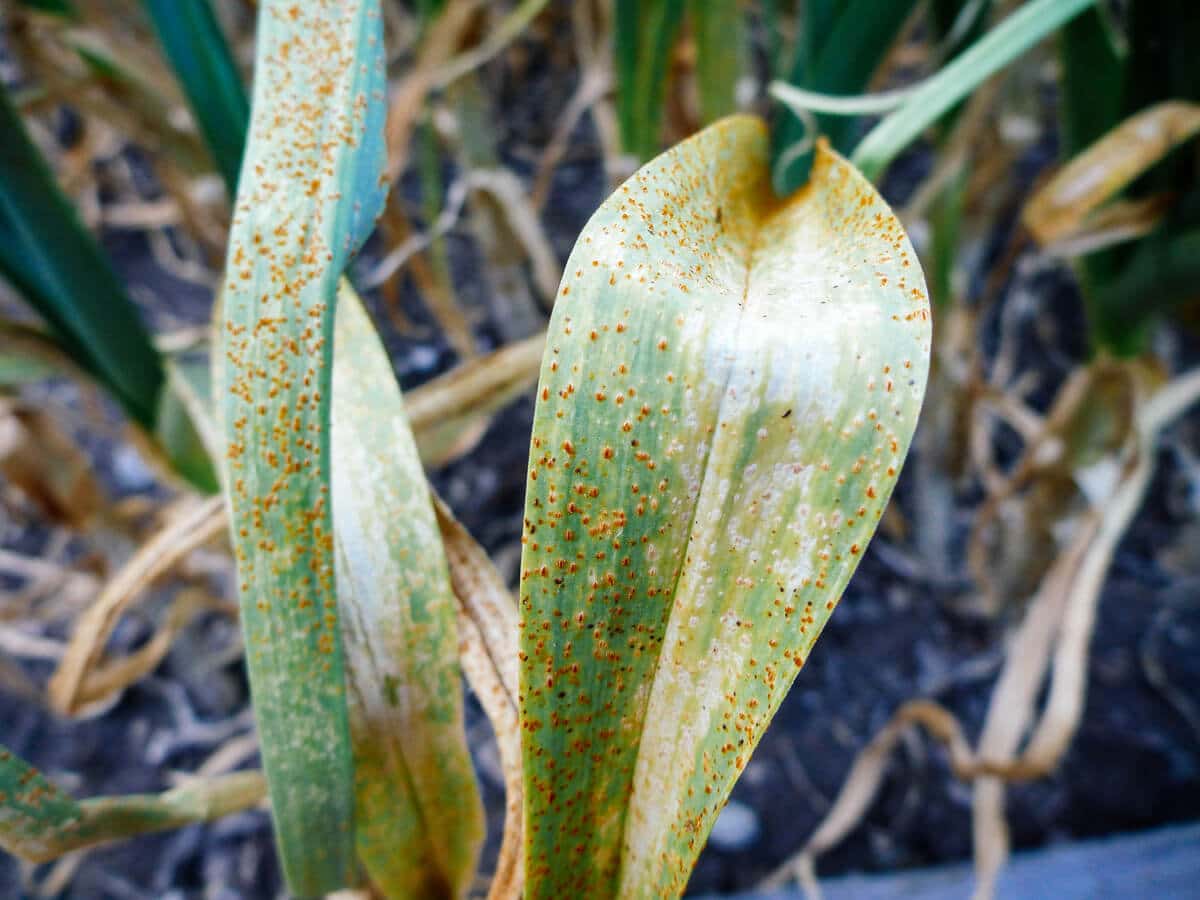
Over time, these spots become darker orange or black pustules (raised spots), indicating a reinfection of rust in the same season.
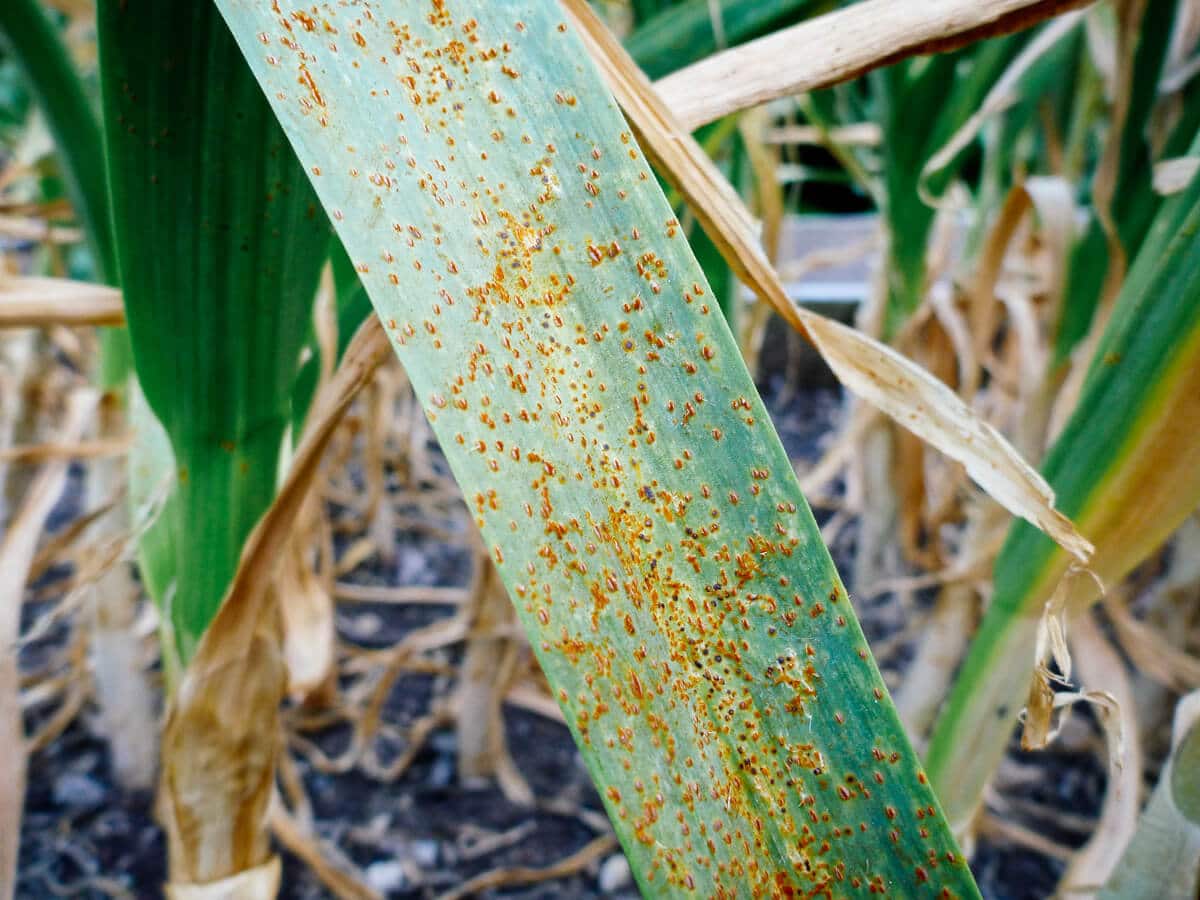
A severe case of garlic rust, especially one that appears early in the season, causes leaves to yellow and wither and limits bulb development.
Rust is an obligate parasite; that is, it can only survive on living plant tissue (similar to mistletoe). It’s also autoecious, which means it completes its entire lifecycle on a single host. So while it feeds on its host, it does not kill it (the infected crop). It merely reduces plant vigor.
Rust completes several cycles of spore production in one growing season, and can either overwinter on volunteer crops or produce dormant spores that survive the winter and wait for new hosts to infect.
Is it safe to eat garlic with rust?
Garlic affected by rust is still edible (and tasty) and unless the infection was severe, you should get a decently sized bulb at harvest time. There’s no need to prematurely pick your garlic crop unless the entire plant is brown and dead. (Like dead dead, not “ready and ripe” dead.)
Read more: The Trick of Knowing When to Harvest Garlic
True story: I once had a garlic that was so badly infected, I had to cut off almost all its leaves to curb the spread. All that remained was a healthy green stalk and a bright green mohawk, both of which hung on for the next three weeks until harvest. What I found underneath the soil was an average-sized bulb.
Whether the bulb continued to develop after its drastic haircut, I can’t be sure—but there was no harm in leaving it in the ground.
Below is a comparison of a healthy head of garlic with only a slight case of rust in the middle of spring, versus a garlic that had been heavily infected over winter. The healthy garlic is the same size or even larger than my unaffected crop, while the infected garlic is noticeably smaller.
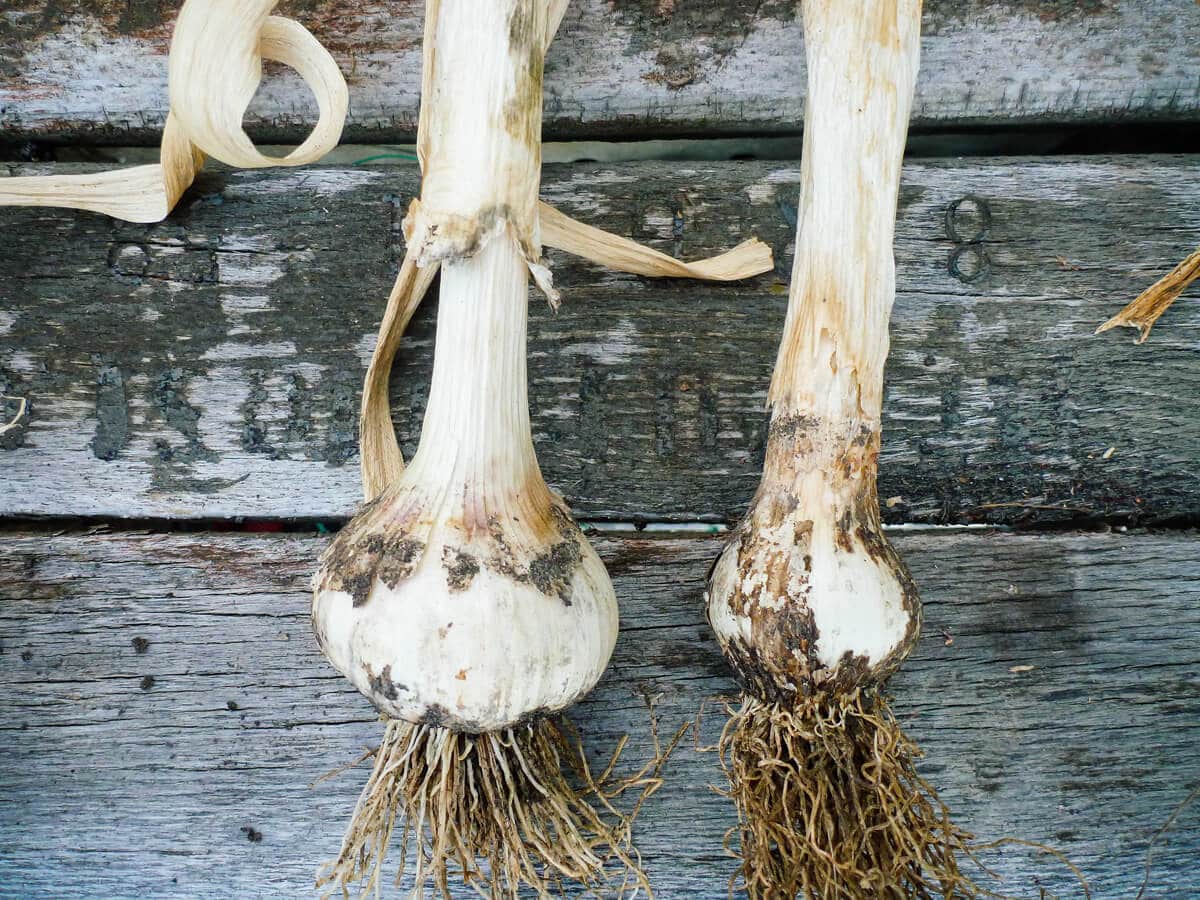
Though the stunted garlic produced fewer and smaller cloves, they were still firm and flavorful and looked no different (other than being mini-sized and rather cute—I found them to be the perfect size to toss whole into a roast).
Onion plants infected with rust typically form smaller bulbs as well, but are otherwise safe to eat (just discard the infected leaves before curing your onions). The same goes for leeks, which might develop thinner stems if the crop is heavily affected by the fungus.
Alliums that are grown primarily for their leaves, like green garlic, scallions, and chives, can only be eaten if the plants are harvested immediately once rust appears. At that early stage, any infected leaves can be discarded in the trash, and healthy, unblemished leaves can be used in the kitchen.
How to store garlic or onions with rust
If a garlic or onion crop is badly infected with rust at harvest time, the leaves should be cut off, leaving a half-inch to an inch of stem on the bulb to keep other fungi or bacteria from entering.
Discard the infected leaves in the trash or in your municipal yard waste can. (Don’t compost infected leaves unless you manage a proper hot compost pile that heats up to at least 140°F to kill pathogens.)
Once the rusted leaves are removed, continue the full curing process with your garlic and onions, and store them like normal.
Related: 7 Secrets to Harvesting, Curing, and Storing Onions
How to treat rust on plants organically
Unfortunately, there are no reliable controls for treating rust organically.
Homemade remedies (with mixed results) can be found online, but in all honesty, there’s not much an organic gardener can do once garlic rust sets in.
The only way to get rid of the fungus completely is by snipping off the leaves as soon as the first white or yellow spots start to appear. You’ll have the most success with this if you inspect your plants daily throughout winter and spring to catch the infection early.
Throw the infected leaves in the trash (not the compost bin), wash your hands and clothes, and disinfect your pruning shears to prevent the fungus from spreading to other plants.
Read next: DIY Tool Station: The Fastest Way to Clean Garden Tools
Even with the infected leaves removed, the garlic stalk should continue to photosynthesize and send energy down to the bulb.
Easy ways to reduce or prevent allium rust
You are pretty much at the mercy of the weather when it comes to allium rust, but there are a few things you can do to try to prevent it:
- The fungus flourishes when the weather is cool, sunlight is low, and humidity is high. If you live in this type of climate or had a very wet/gray season, avoid watering your plants late in the day, and especially avoid watering the leaves if they won’t have a chance to dry out before evening.
- Use drip irrigation to water only the root zone of your plants and minimize water drifts or splashes.
- Grow your garlic and onions in the sunniest spot possible, and allow enough space between plants for air to circulate among the foliage.
- Fertilize adequately, but not excessively. Over-application of nitrogen (which results in lush foliage growth) has been found to make allium plants more susceptible to rust infections.
- Rotate your crops and do not grow garlic, onions, leeks, and other alliums in the same area where rust appeared in the previous three years on any allium crop.
- If any part of your garden was severely infected with rust, remove and discard all volunteer alliums that pop up the following season.
Even if your crop is plagued by garlic rust this season, all is not lost—you can still use the cloves as seed garlic for next season. A study conducted by the University of California found that seed garlic taken from rust-infected plants did not cause rust in the resulting new crop.
Simply choose the largest cloves from the cream o’ the crop of your properly cured and stored garlic heads, and give it another go this year!
More posts you might find helpful:
- How to Choose the Best Garlic Varieties For Your Garden
- Get Your Garlic On: Planting and Growing Garlic the Easy Way
- How to Grow, Harvest, and Use Green Garlic In Spring
- The Trick of Knowing When to Harvest Garlic
- The Ultimate Guide to Harvesting, Curing, and Storing Garlic
This post updated from an article that originally appeared on July 11, 2011.
View the Web Story on treating garlic rust.


